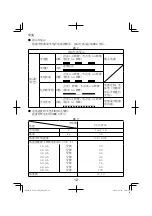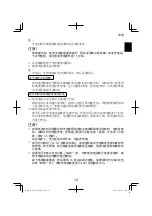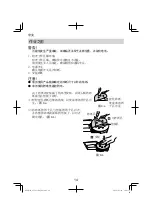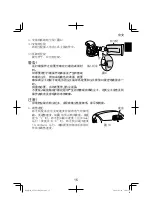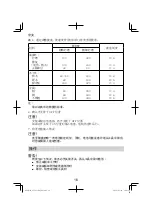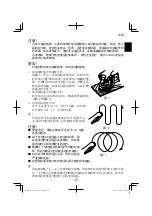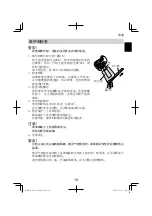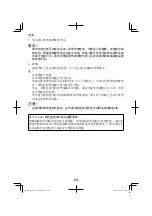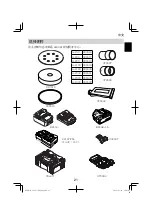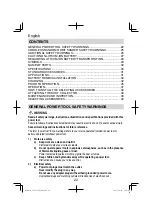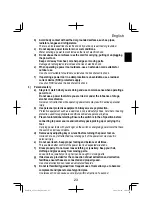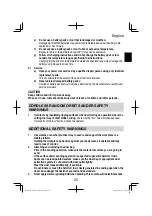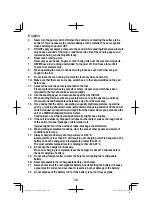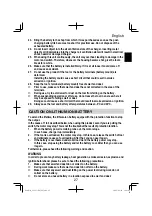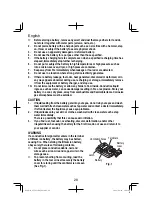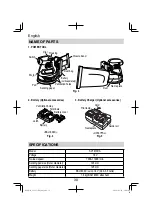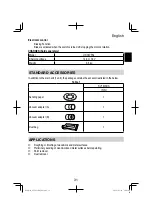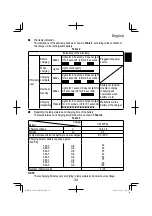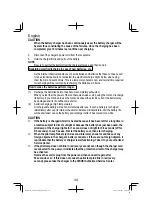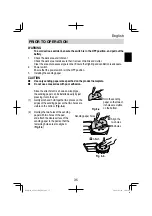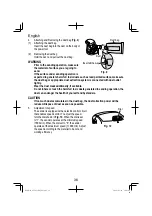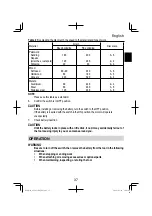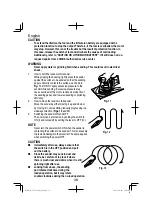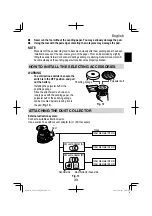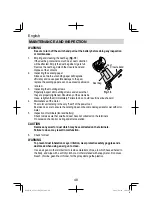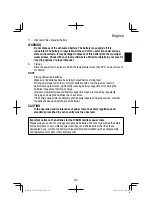
English
26
4. Never turn the power switch ON when the sander is contacting the surface to be
sanded. This is necessary to preclude damage to the material. The same applies
when switching the power OFF.
5. DO NOT apply excessive pressure to the sander while sanding. Excessive-pressure
may cause overload of the motor, reduced service life of the sanding paper, and
lowered sanding or polishing e
ffi
ciency.
6. Never touch moving parts.
Never place your hands,
fi
ngers or other body parts near the tool’s moving parts.
7. NEVER leave tool running unattended. Turn power o
ff
. Don’t leave tool until it
comes to a complete stop.
8. When operating the tool, do not wear work gloves as such cloth wear can get
caught in the tool.
9. Do not leave the tool running. Operate the tool only when hand-held.
10. Make sure that there are no cracks, scratches, or other abnormalities on the pad
before use.
11. Accessories must be securely mounted to the tool.
Prevent potential injuries to yourself or others. Accessories which have been
mounted to the tool should be secure and tight.
12. Use the sanding paper and accessories speci
fi
ed by HiKOKI.
13. When sanding metal, sparks are generated. Do not use the dust bag, and keep
other persons and
fl
ammable substances away from the work area.
14. If you notice that the unit is generating unusually high temperatures, operating
poorly, or making abnormal noises, immediately stop using and shut o
ff
the power
switch. Request an inspection and repair from the dealer where you purchased the
unit or a HiKOKI Authorized Service Center.
Continuing to use while operating abnormally might cause injuries.
15. If the unit is mistakenly dropped or strikes another object, make a thorough check
of the unit for cracks, breakage or deformation, etc.
Injuries might occur if the unit has cracks, breakage or deformation.
16. When working at elevated locations, clear the area of other people and aware of
conditions below you.
17. Always charge the battery at a temperature of 0–40°C.
A temperature of less than 0°C will result in over charging which is dangerous. The
battery cannot be charged at a temperature greater than 40°C.
The most suitable temperature for charging is that of 20–25°C.
18. Do not use the charger continuously.
When one charging is completed, leave the charger for about 15 minutes before
the next charging of battery.
19. Do not allow foreign matter to enter the hole for connecting the rechargeable
battery.
20. Never disassemble the rechargeable battery and charger.
21. Never short-circuit the rechargeable battery. Shortcircuiting the battery will cause
a great electric current and overheat. It results in burn or damage to the battery.
22. Do not dispose of the battery in
fi
re. If the battery is burnt, it may explode.
000Book̲SV1813DA̲ChS.indb 26
000Book̲SV1813DA̲ChS.indb 26
2022/02/16 10:21:46
2022/02/16 10:21:46

